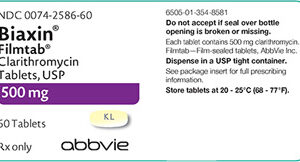Metoclopramide Overview
Metoclopramide is a prescription medication known for its efficacy in enhancing gastrointestinal motility, which means it helps the stomach empty faster. Its primary function is linked to its antagonistic effect on dopamine receptors and its elevating impact on gastrointestinal tissue acetylcholine levels. The result is the accelerated transit of food through the stomach and into the intestines, thereby mitigating symptoms such as nausea, vomiting, and heartburn caused by gastroparesis or slow stomach emptying.
Usage Indications
The medication is especially endorsed for treating symptoms of gastroesophageal reflux disease (GERD) in patients unresponsive to other therapies, and for diabetic gastroparesis—slow stomach emptying due to diabetes. It is also widely implemented in healthcare settings as a prophylactic measure against emesis (vomiting) induced by chemotherapy and anesthesia. Additionally, it aids in diagnostic gastrointestinal procedures by accelerating stomach and intestinal transit.
Administration and Dosage
Administering metoclopramide involves tailor-made dosing contingent upon the ailment being treated, patient age, weight, and additional factors. Adults typically start with a dosage of 10 mg taken orally 30 minutes before meals and at bedtime for symptoms of GERD or gastroparesis. However, the dosage might be adjusted by healthcare professionals based on the response and tolerability of the individual. Injections of metoclopramide are also utilized for preemptive measures against chemotherapy-induced nausea and are usually given 30 minutes before the administration of the chemotherapeutic agent. Dosage precision is critical, and a healthcare provider’s guidance should be regarded as definitive.
Contraindications
Metoclopramide use is ill-advised for individuals with a history of hypersensitivity to the drug or its ingredients, pheochromocytoma, as it may precipitate a hypertensive crisis, and those presenting with gastrointestinal perforation, hemorrhage, or mechanical obstruction. Caution is advised when prescribing metoclopramide to patients with epilepsy, as the medication may increase the frequency and intensity of seizures.
Precautions
Overall, cautious application of metoclopramide is necessitated due to the potential for central nervous system effects, such as restlessness and drowsiness. Healthcare providers are urged to evaluate the risk-versus-benefit ratio in the presence of underlying conditions such as Parkinson’s disease, hypertension, or renal/hepatic impairment. Continuous monitoring is recommended to avert the development of tardive dyskinesia, an often irreversible condition characterized by involuntary and repetitive body movements, which can ensue with prolonged treatment.
Adverse Effects
While many individuals take metoclopramide without serious complications, side reactions can occur. Commonly reported untoward events include fatigue, insomnia, headache, and dizziness. Other notable side effects encompass gastrointestinal disturbances, such as nausea, bowel irregularities, and abdominal discomfort. It is vital to consult a healthcare provider if any of these or other symptoms arise, as they can discuss potential ways to manage or mitigate these reactions.
Drug Interactions
Certain pharmaceuticals can adversely interact with metoclopramide, influencing its effectiveness or provoking unfavorable effects. Medications susceptible to interaction include antipsychotics, monoamine oxidase inhibitors (MAOIs), and antidepressants. To minimize risk, a detailed discussion of all other medications, including over-the-counter and herbal preparations, with a healthcare professional is advised before commencing a metoclopramide regimen.
Special Patient Groups
When prescribing metoclopramide, the categorization of special populations is of particular significance. This encompasses pregnant women, for whom metoclopramide should only be used if clearly necessary, considering the inadequate data on its effects on the fetus. Nursing mothers should also exhibit caution, as the drug can be excreted in breast milk. For pediatric and geriatric populations, adjustments to dosage and heightened monitoring for side effects are critical due to the increased susceptibility to drug reactions and potential interaction with existing treatments in these groups.
Overdose Response
In cases of metoclopramide overdose, symptoms can range from drowsiness to severe complications such as seizures or extrapyramidal reactions. Immediate medical intervention is essential. Treatment typically entails supportive measures to manage symptoms and meticulous monitoring of the patient’s condition. If administered shortly after an overdose, activated charcoal may be used to limit the drug’s absorption.
Pharmacological Details
The pharmacology of metoclopramide is multifaceted. Predominantly, it acts as a dopamine D2 receptor antagonist, thereby enhancing gastrointestinal motility and accelerating gastric emptying. It also has indirect cholinomimetic effects leading to increased lower esophageal sphincter tone. Metoclopramide undergoes hepatic metabolism and renal excretion with a half-life averaging five to six hours, which may extend in patients with renal impairment.
Handling and Storage
To maintain the drug’s stability and effectiveness, the storage conditions for metoclopramide require that it be kept at room temperature away from moisture and direct sunlight. Tablets and oral solutions should be stored in their original packaging until they are needed. Prefilled syringes or vials for injection should also be kept in a controlled environment, according to the manufacturer’s specifications. All forms of the medication should be kept out of reach of children to prevent accidental ingestion.






Reviews
There are no reviews yet.